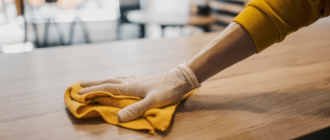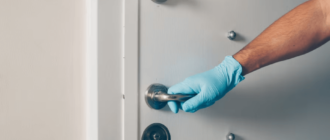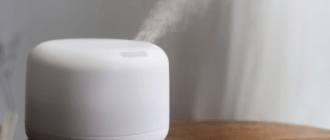How To Test Indoor Air Quality For Mold
Are you concerned about the air quality in your home? One of the biggest threats to a healthy indoor environment is mold. Not only can it cause structural damage, but it can also have serious health effects on you and your family. In this blog post, we’ll discuss how to test for mold and ensure that your indoor air quality remains at a safe level. By taking preventive measures and addressing any issues promptly, you can keep your home free from harmful molds and breathe easy knowing that you’re protecting the health of those under your roof.
Understanding Mold and Its Effects on Indoor Air Quality
Mold is a type of fungus that grows in damp and humid environments. It can grow on any organic material, including wood, paper, and fabrics. While mold plays an important role in nature by breaking down dead plant matter, it can be harmful when it grows indoors.
The presence of mold in your home can have serious consequences for both the air quality and your health. Mold produces spores that can become airborne and cause respiratory problems such as allergies or asthma attacks. Additionally, exposure to certain types of mold has been linked to more severe health issues like lung infections or even neurological damage.
Mold growth also leads to unpleasant odors within homes which could lead to headaches or other symptoms if left untreated. In addition to physical effects, mold growth could negatively impact property values as well as make homes difficult to sell due to unattractive appearance.
It’s essential for homeowners and renters alike to understand the potential dangers associated with indoor mold growth so they can take steps towards prevention through proper ventilation systems or cleaning routines before needing professional remediation assistance.
What is Mold?
Mold is a type of fungus that grows in damp, humid environments. It thrives on organic matter like wood, paper, and fabrics. Mold can appear as fuzzy patches or spots with various colors ranging from black to green or even pink.
Mold reproduces by releasing spores into the air which can spread easily and quickly throughout a space. These spores are microscopic and cannot be seen without magnification.
Indoor mold growth is common in areas where moisture levels are high such as bathrooms, kitchens, basements, or crawl spaces. Poor ventilation increases the likelihood of mold growth by keeping humidity levels elevated over time.
Although some types of molds may not cause significant health concerns for most people, others can trigger allergic reactions or respiratory problems when inhaled.
It’s important to address any visible signs of mold promptly to prevent further damage and potential health risks associated with exposure to indoor air contaminants.
Effects of Mold on Health and Air Quality
Mold is a type of fungi that grows in damp and humid environments. While it’s a natural part of the environment, mold can become a serious problem when allowed to grow unchecked indoors. Exposure to mold can have negative effects on both the air quality within your home and your health.
Inhaling mold spores can cause respiratory problems such as wheezing, coughing, and difficulty breathing. People with allergies or asthma are particularly susceptible to these symptoms. Additionally, exposure to mold has been linked to headaches, fatigue, and even depression.
Not only does mold have negative effects on our health but also on indoor air quality. In fact, poor indoor air quality due to high levels of pollutants like mold has been linked to higher rates of respiratory illnesses among occupants.
Therefore regular testing for mold is necessary not just for maintaining good indoor air quality but also for preventing any adverse health effects from prolonged exposure.
Signs of Mold Infestation
Mold can be sneaky and often goes unnoticed until it has become a major problem. That’s why it is important to know the signs of mold infestation in your home.
One of the most obvious signs is visible mold growth, which may appear as fuzzy patches or discoloration on walls, ceilings, floors, or other surfaces. Another sign to look out for is a musty odor that doesn’t go away with normal cleaning.
If you or members of your household are experiencing allergy-like symptoms such as coughing, sneezing, runny nose, and watery eyes that seem to persist even when not outside; this could also indicate a mold infestation. Other health symptoms include skin rashes and fatigue.
Humidity levels above 60% in your home can create an environment favorable for mold growth. Therefore if you have had any water damage or leaks within the house recently then there may be hidden pockets of moisture behind walls, drywall, etc.
It’s essential to take these signs seriously because exposure to mold spores can lead to severe respiratory problems over time like asthma attacks and allergic reactions.
How to Test Indoor Air Quality for Mold
Testing indoor air quality for mold is a crucial step in maintaining a healthy living environment. Fortunately, there are several ways to test for the presence of mold in the air.
Firstly, you can conduct an at-home mold testing using DIY kits that are readily available in hardware stores. These kits typically involve taking air samples and sending them to a lab for analysis.
Another way to test indoor air quality is by hiring a professional who will assess your home or building with specialized equipment such as moisture meters, thermal imaging cameras, and other tools that detect signs of water damage.
It’s also important to note that some signs of mold infestation may not be visible. In this case, it’s best to rely on experienced professionals who can accurately diagnose the issue and provide effective solutions.
Interpreting the results from these tests requires careful attention. If high levels of mold spores are found in your home or building, immediate action should be taken.
Regular testing is essential for maintaining good indoor air quality and preventing potential health risks associated with exposure to harmful molds. By being proactive about testing and seeking professional help when necessary, you can ensure a safe living environment for yourself and those around you.
Interpreting Test Results
After taking samples of your indoor air quality, you will receive a report outlining the test results. This report can be overwhelming to interpret if you’re not familiar with the terms and measurements used.
The first thing to consider is whether any mold was detected at all. Even if no mold was found, it’s still essential to keep an eye on potential problem areas in your home.
If mold was detected in the sample, the next step is to determine its type and concentration level. Some types of mold are more harmful than others and require immediate action.
The concentration level is also critical as it determines the severity of infestation. A high concentration indicates a severe problem that needs attention right away.
It’s essential to look at both indoor and outdoor levels when interpreting results since some molds naturally occur outdoors but can cause problems indoors when present in high concentrations.
Understanding test results is crucial for determining what steps need to be taken next. If there are any doubts or concerns about interpretation, consulting with professionals can help provide clarity on how best to proceed.
What to Do If You Have Mold in Your Home
If you have discovered mold in your home, it is important to take immediate action. Mold can spread quickly and cause health issues for you and your family if left untreated.
The first step is to identify the source of the moisture that is causing the mold growth. This could be a leaky pipe, a roof leak, or poor ventilation. Once you have identified and fixed the underlying issue, it’s time to address the mold itself.
Small areas of mold can be cleaned with soap and water or a mixture of vinegar and water. However, larger areas may require professional help from a certified mold remediation specialist.
It’s important to wear protective gear such as gloves, eye protection, and an N-95 respirator mask when cleaning up mold. Disturbing the spores can release them into the air and potentially make things worse.
After cleaning up any visible molds, consider investing in an air purifier with HEPA filters to capture any remaining spores in your indoor environment.
Remember that prevention is key when it comes to controlling indoor air quality. Regularly inspecting your home for moisture issues and promptly addressing them will help prevent future incidents of mold growth.
Professional Mold Remediation
Professional Mold Remediation is a process that involves the removal and cleanup of mold in homes or buildings. This process is usually necessary when mold infestation has spread throughout your home, affecting air quality and posing health risks to you and your family.
Mold remediation specialists are experienced professionals who have been trained to detect, remove, and prevent the growth of mold in homes. They use specialized equipment like HEPA vacuums, air scrubbers, and dehumidifiers to clean up affected areas thoroughly.
The first step in professional mold remediation is identifying the extent of the problem by conducting a thorough inspection. Once they have identified all areas with visible signs of mold growth as well as hidden ones using infrared cameras or moisture meters, they will develop a comprehensive plan for removal.
During this process, it’s important to ensure that all occupants leave the premises until cleaning is complete because disturbing spores can be dangerous. The technicians will then contain contaminated areas using negative pressure chambers before beginning cleanup efforts.
After removing all visible traces of mold from surfaces such as walls or furniture pieces impacted by water damage where it thrives best will be replaced if necessary; they’ll sanitize these items too so no spores remain behind. Finally comes post-remediation testing which confirms whether any remaining spores exist within an acceptable range after being removed thus guaranteeing proper indoor air quality levels again.
In summary, Professional Mold Remediation should always be left up to specialists who understand how dangerous even small amounts can be when not dealt with properly, effectively safeguarding both property value but also ensuring occupant health isn’t compromised either short-term nor long-term.
Conclusion: The Importance of Regular Indoor Air Quality Testing
Regular indoor air quality testing is crucial to maintain a healthy and safe living environment.
Mold infestation can pose serious health risks and affect the quality of air indoors, leading to respiratory problems, allergies, and even long-term illnesses. By understanding the signs of mold growth and regularly testing for it, you can take preventive measures before things get out of hand.
If you suspect mold in your home or workplace or notice any signs of poor indoor air quality such as musty odors or persistent coughing, don’t hesitate to seek professional help. An experienced mold remediation team can accurately identify the root cause of the problem and provide effective solutions to eliminate it.
Maintaining good indoor air quality should be a top priority for everyone. Regular testing for mold will not only ensure that your home is free from harmful contaminants but also promote overall well-being for you and your family. Remember that prevention is always better than cure when it comes to protecting yourself against potential health hazards caused by poor indoor air quality!





